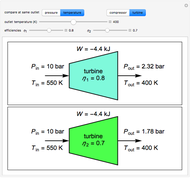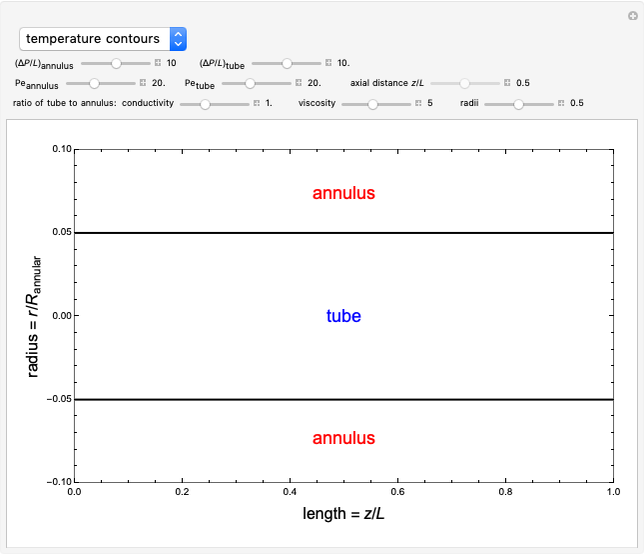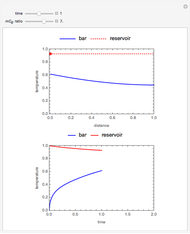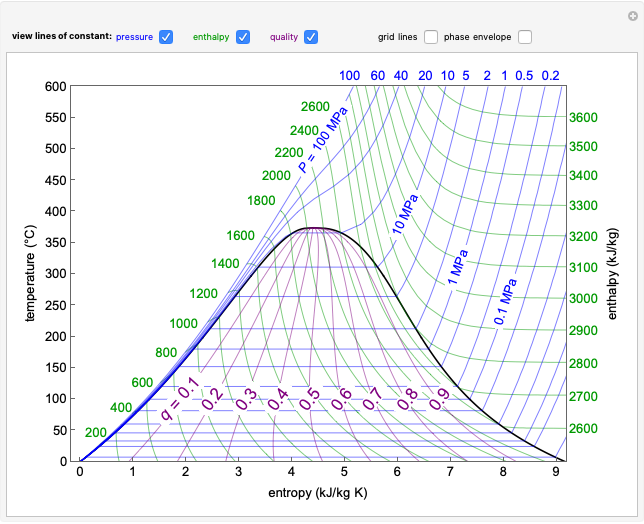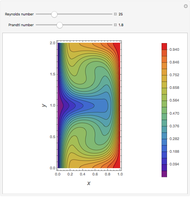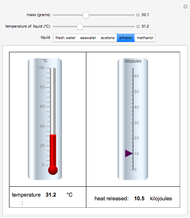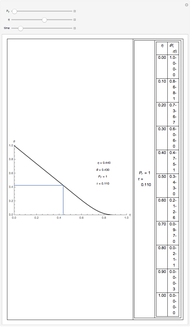Transient Natural Convection between Two Plates at Different Temperatures

Requires a Wolfram Notebook System
Interact on desktop, mobile and cloud with the free Wolfram Player or other Wolfram Language products.
This Demonstration analyzes the transient free convection of a viscous incompressible fluid between two vertical plates at different temperatures. The fluid is initially at rest and the temperature of the fluid and the plates is the same. Convection occurs due to the Soret effect caused by a step change in the temperature of the plates [1].
[more]
Reference (June 2020)
[1] R. B. Bird, W. E. Stewart and E. N. Lightfoot, Transport Phenomena, rev. 2nd ed., New York: John Wiley & Sons, Inc., 2007.
Contributed by: Clay Gruesbeck
Open content licensed under CC BY-NC-SA
Snapshots
Details
Consider two vertical, infinitely long parallel plates separated by a distance  ; the
; the  axis is along the left plate and the
axis is along the left plate and the  axis is perpendicular to it. Initially the temperature of the fluid as well as the plates is the same
axis is perpendicular to it. Initially the temperature of the fluid as well as the plates is the same  ; at time
; at time  the temperature of the plates is instantaneously changed to two temperatures,
the temperature of the plates is instantaneously changed to two temperatures,  and
and  . Assume that all the fluid properties are constant except the fluid density, which decreases with temperature.
. Assume that all the fluid properties are constant except the fluid density, which decreases with temperature.
The governing equations for this system using the Boussinesq approximation [1] are:

and
 .
.
Here the dimensional variables  ,
,  ,
,  and
and  represent temperature, fluid velocity, distance between the plates and time; the parameters
represent temperature, fluid velocity, distance between the plates and time; the parameters  ,
,  ,
,  ,
,  ,
,  and
and  are the fluid density, heat capacity, thermal diffusion coefficient, kinematic viscosity, gravity and the coefficient of thermal expansion.
are the fluid density, heat capacity, thermal diffusion coefficient, kinematic viscosity, gravity and the coefficient of thermal expansion.
It is convenient to define the following dimensionless variables:
 ,
,
 ,
,
 ,
,
 ,
,
where  ,
,  ,
,  and
and  are the dimensionless horizontal coordinate, time, velocity and temperature, respectively.
are the dimensionless horizontal coordinate, time, velocity and temperature, respectively.
The momentum and energy conservation equations then are
 ,
,
 ,
,
where the Prandtl number is given by
 .
.
The initial and boundary conditions are
 ,
,

and
 .
.
Permanent Citation









